Gold jewellery has always been a crucial category for retailers; however, this year, there’s something different in the air.
Gold has been adored for thousands of years because of its malleability, versatility, and aesthetic beauty. Whether times are tough or it’s smooth sailing, consumer passion for gold jewellery is always high.
So, what makes this year different?
Chinese astrology is one of the oldest systems in the world, and in the lunar calendar, we have arrived at the fifth of the 12-year cycle of animals – the Year of the Dragon.
For those born this year, the auspicious colour is gold.
Wearing gold jewellery can enhance your style and symbolise success, wealth, and honour, and according to traditional beliefs, potentially influences your prosperity.
Gold is thought to possess strong positive energy and is considered a symbol of royalty and nobility.
Unsurprisingly, bestowing friends and family with gold jewellery is a popular trend during the Year of the Dragon.
Gifting a gold pendant, bracelet, ring, or earrings isn’t just a kind gesture – it’s a wish that the recipient will enjoy good fortune in the coming year.
The importance of gold this year was reflected in the most recent financial report from Chow Tai Fook, the world’s second-largest jewellery retailer.
The company reported a 12.4 per cent increase in sales in the fourth quarter, which it attributed to festivities in China and Hong Kong.
“Demand for gold jewellery and products remained resilient in the quarter due to the growing interest in gold jewellery among young consumers,” the report reads.
To capitalise on this trend, Chow Tai Fook released a series of new dragon-themed products and designs, including new designs for the HUÁ Collection.
It’s a trend that goes beyond jewellery.
Luxury watchmaker Chopard released the Year of the Dragon watch with Urushi lacquer, gold powder, and mother-of-pearl inlays within an 18-carat rose gold case.
The Perth Mint has also joined the celebration, releasing a one-ounce gold bullion coin featuring a dragon on one side and a Queen Elizabeth II memorial obverse on the other.
While it’s true that this year is expected to be a boom for gold jewellery, it’s important to remember that this is not a new phenomenon – and this consumer passion isn’t confined to this year alone.
This year will be the latest chapter in a story that’s been unfolding for millions of years, and your store must be ready to meet the needs of these devout consumers.
|
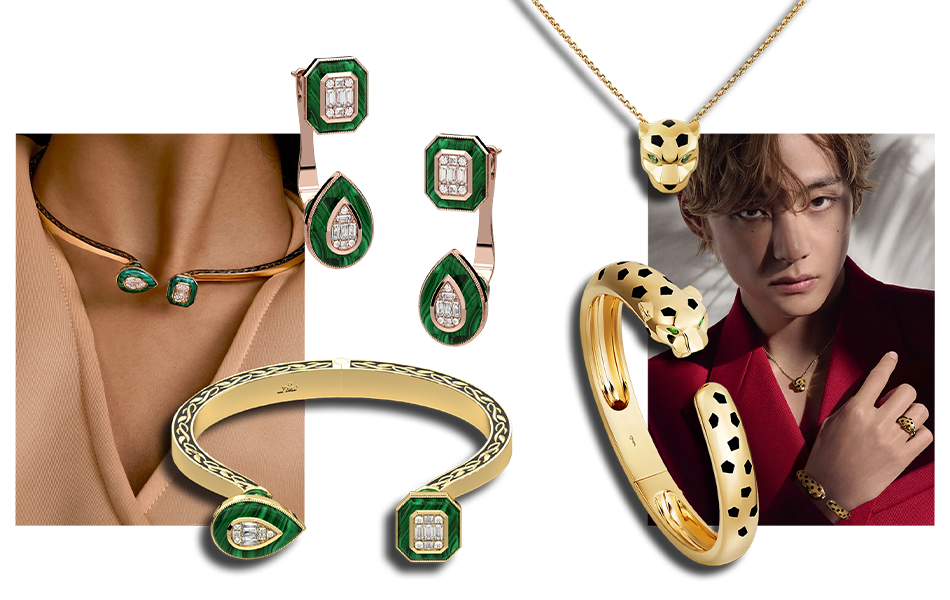 |
| L to R: Clarte Gemini bangle and earrings, Cartier Panthere de cartier |
|
From the beginning
From its use in early economic systems to the evolution of fine jewellery and adornments, gold has played a significant role in civilisations and cultures for thousands of years.
Gold is easily shaped and moulded as a soft metal, making it the ideal candidate for jewellery. Gold is also resistant to tarnishing and rusting, meaning the warm glow of the precious metal has long been an apt symbol of eternal prosperity for the rich and powerful.
The earliest known examples of gold jewellery can be traced to 4400 BC; however, it was likely worn earlier. Archaeologists in Bulgaria have discovered hundreds of pieces of gold jewellery from the Thracian era.
Among the notable treasures was a pair of gold earrings highlighted by an engraving of an animal's head, which was preserved in a monument.
In Ancient Egypt (3100 BC), gold jewellery was worn by the wealthiest members of society. Gold was used in abundance by pharaohs. In 1922, when the tomb of King Tutankarmum was discovered, it was packed with gold.
The Australian Museum in Sydney recently hosted the Ramses & the Gold of the Pharaohs exhibition – showcasing jewellery that is more than 3,500 years old. Among the necklaces, bracelets, rings, earrings, amulets, and diadems was the Collar of Psusennes I, weighing 4.3 kilograms.
Collars of this type were known as the shebyu or ‘gold of honour,’ traditionally given by a pharaoh to officials who had served with particular distinction. Pharaohs also wore the collar as a mark of divine favour.
The culture of Ancient Greece (1200 BC) mirrored these beliefs, with elaborate jewellery worn by aristocrats to symbolise their power. The Greeks also believed that gold offered protection from evil forces.
A wide variety of jewellery was produced in the Hellenistic period, including earrings, necklaces, pendants, pins, bracelets, armbands, thigh bands, finger rings, wreaths, and diadems.
Bracelets were often worn in pairs according to Persian fashion, and jewellery was frequently produced in matched sets.
While silver was more widely available in Ancient China (2070 BC), gold jewellery was popular nonetheless. It was worn by men and women and believed to protect the wearer from misfortune.
The cultural significance of elaborate gold jewellery in India was so significant that many of these beliefs remain active today.
During the Mughal Empire (1526-1719), gold jewellery was thought to offer protection to its wearer and increase the chances of future fortune.
As such, it was popular among royalty. These beliefs evolved into the custom of gifting gold jewellery to brides to ensure future financial security, a tradition that continues today.
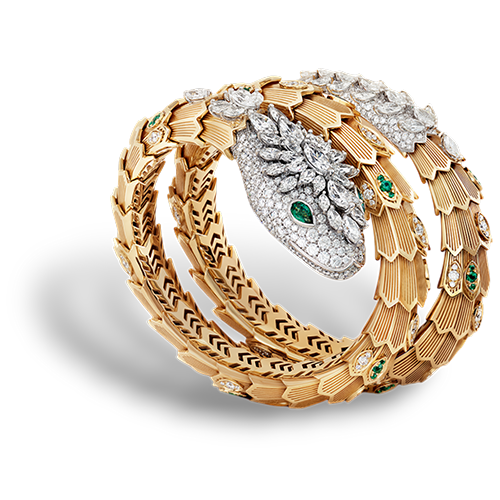 | 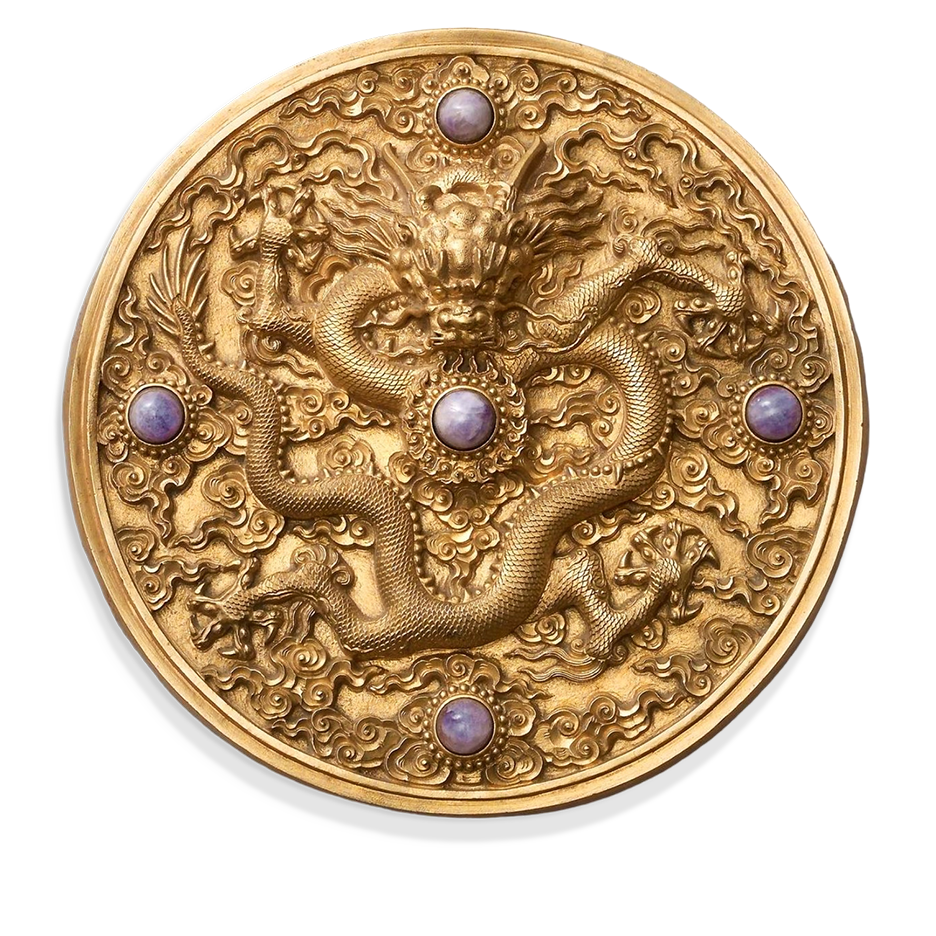 |
Serpenti Watch Bvlgari |
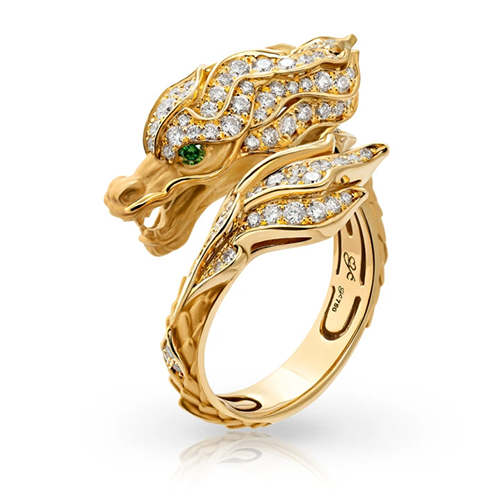 |
Ring New Shanghai Maxi Pave Carrera y Carrera | Chinese Qing Period Gold & Amethyst Dragon Medallion 1736 - 1795 AD |
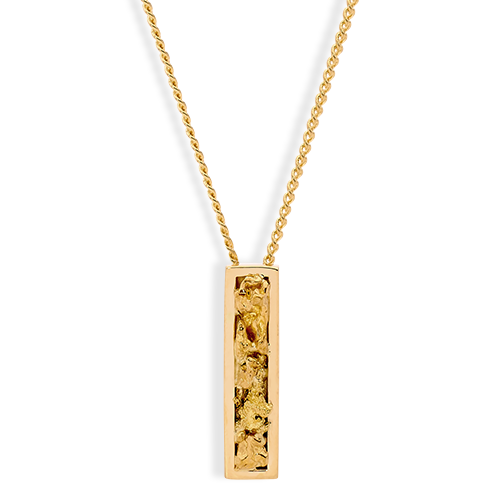 | 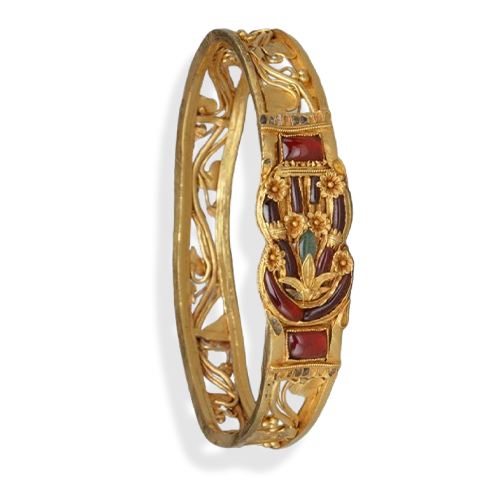 | 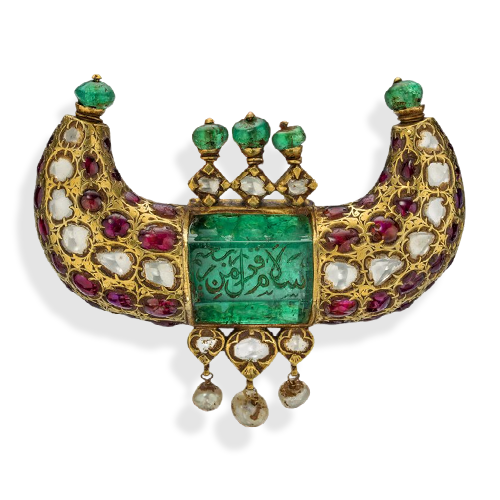 |
Nugget Pendant Soklich & Co. | Hellenic Gold Filigree Armband 200 - 300 AD | Mughal Gold & 125-carat Emerald Pendant / Brooch 1526 - 1857 AD |
|
Cosmic charm
A widespread belief among the Incas (1438-1533) was that gold is tears from the sun. It’s remarkable to compare this mythology with our modern scientific understanding.
When two neutron stars collide, the explosion involves enough pressure to forge elements heavier than iron – including gold.
It’s believed that these gold particles were mixed in a cosmic cloud of gas, with dust expelled into space from the supernova that formed Earth.
The gold sank into the Earth’s core but rose to the mantle and crust after asteroid strikes. If it hadn’t been for this bombardment from space, much of the gold mined today likely would’ve been too deep underground.
Gold is found in rock ore worldwide; however, the majority is believed to be at the bottom of the ocean.
Rocks containing gold have moved to the surface over time, experiencing erosion. The gold in these rocks is washed into creeks and rivers, forming alluvial deposits.
It then becomes concentrated in recesses and troughs, as gold is heavier than much of the matter captured by flowing water. These deposits ignited the Gold Rush in Australia in the 1850s.
|
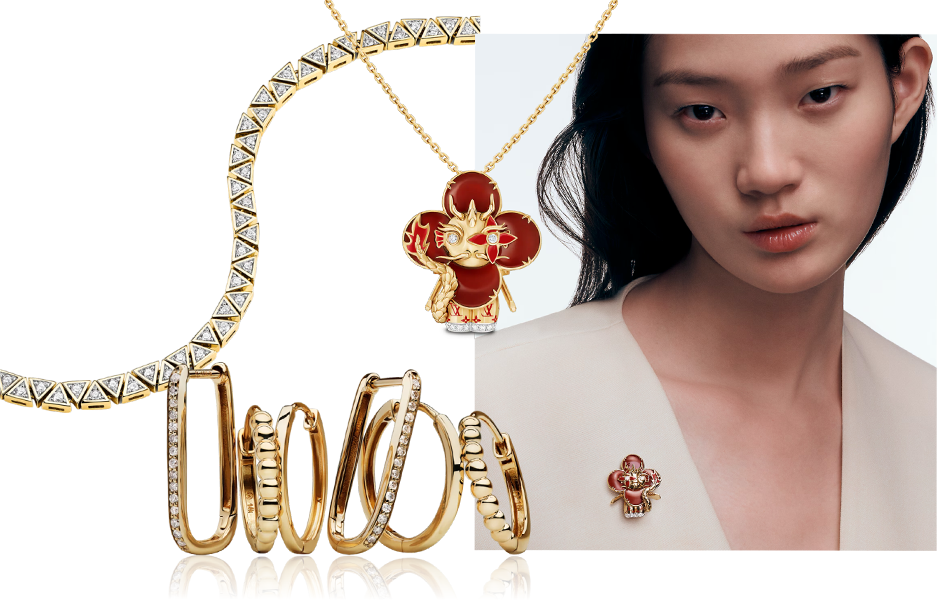 |
| L to R: Mejuri Patra diamond bracelet and hoop earrings, Louis Vuitton Vivienne dragon brooch / pendant |
|
Blessed soil
According to a report published by the World Gold Council (WGC) in 2021, more than 205,000 metric tonnes of gold have been mined throughout history.
It was estimated that a further 53,000 tonnes remained beneath the earth in previously identified reserves, with Australia hosting around 19 per cent of the global supply.
It isn’t easy to calculate the exact amount of unearthed gold – the greater the depth, the more expensive it is to extract – particularly under the sea.
Looking closely at today’s climate, the WGC has predicted a stable gold market in 2024.
In particular, analysts have outlined three likely scenarios.
The first was a 65 per cent chance of a soft landing in the global economy for 2024, which could deliver flat growth for gold and upside potential.
A hard landing or recession was given a 25-55 per cent chance of occurring, sending gold prices much higher than current record levels.
The final scenario was the status quo, which had a 10 per cent chance of happening in 2024. This likely results in a flat outlook for bullion prices.
Gold jewellery demand remained resilient despite these record prices. Consumption was fractionally higher in 2023 compared to the previous year.
After a relatively weak year, China was the primary source of increasing demand; however, other intriguing areas of improved demand, such as Turkey, also contributed. Conversely, the price of gold significantly impacted demand in India.
In Australia, there was a six per cent decline in jewellery demand in 2023. This resulted from consumer cost of living pressures and the increasing impact of rising prices.
|
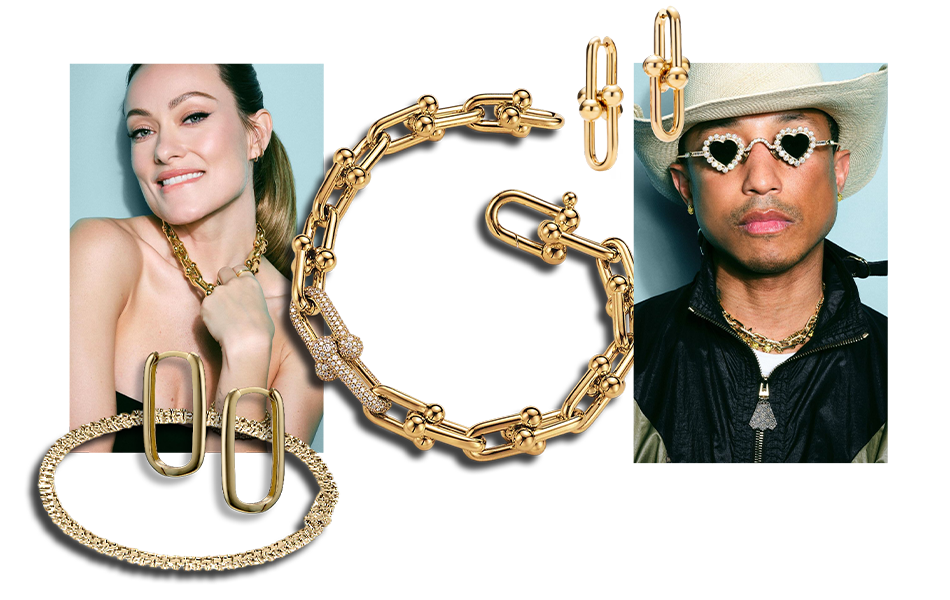 |
| L to R: Athan gold huggies and tennis bracelet, Tiffany & Co. hardware bracelet |
|
Where to begin?
Given gold's timeless cultural significance, it should come as no surprise that it’s such a crucial category for jewellery retailers. When discussing gold jewellery, it’s folly to overlook the importance of chains.
What makes gold chains so powerful is their endless variety — from thin metallic strands to larger-than-life statement chains, there’s something for every occasion.
Retailers can offer delicate gold chains that are ideal for a natural look or big-and-bold chains that command attention.
Layered and long chains add versatility, while lariats elongate the next for a sophisticated and seductive look.
“One could argue that the gold chain necklace is the most ubiquitous accessory of all time,” writes Samantha Solomon for Vogue.
“The style, which was championed by both ancient Egyptian rulers and early 2000s R&B recording artists, has transcended time and culture, becoming a fan favourite among not only off-duty models but also on-the-go, modern-day moms.
She continues: “Few jewellery baubles can claim to have as robust and versatile a presence as the gold chain.”
Gold chains have long been popular accessories for A List couples appearing publicly.
Justin and Hailey Bieber have sharply contrasting tastes; however, the duo often sports matching gold chains.
The most discussed celebrity couple of the year – Taylor Swift and Travis Kelce – also rocked matching gold chains in their first public appearance as a couple.
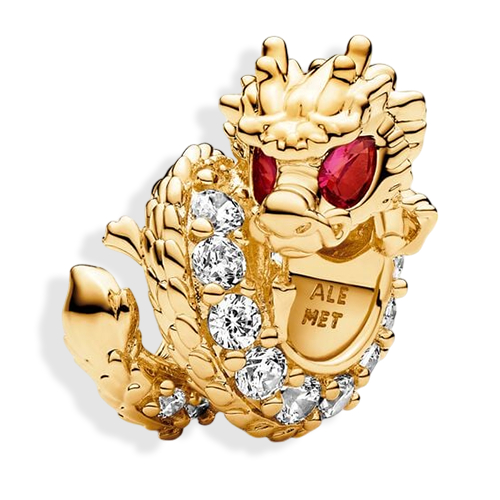 |
Pandora Dragon charm |
Gold earrings complement any incomplete outfit, and medium gold hoop earrings are ideal for an everyday casual look.
Tending to be smaller in diameter and thicker than standard hoop earrings, huggies are a very wearable option – and as a result, remain popular with younger consumers.
“It only makes sense that huggie earrings would make a long-awaited comeback as one of the most popular earring choices for 2024,” writes Emily Schinella of Shiels.
“A more pared-back version of the classic hoop, huggie earrings are earrings that ‘hug’ your lobe with a shorter hoop rather than loop through it as a hoop does. A favourite for Meghan Markle, Selena Gomez and Dua Lipa, huggie earrings are back in a big way this year.
“Especially gold huggie earrings that bring a lot of vibrance to your look, particularly in an era where many of our faces are hidden behind a face mask.”
Delicate drop earrings complement any light but still elegant summer outfit. Larger and more decorative pieces are given their time to shine for formal events.
Finally, who could forget the timeless elegance of gold rings? While trends in jewellery can change quickly, the shifting popularity of certain styles in engagement and wedding rings tends to be slower.
Yellow gold rings have long been a staple. They can match both understated and loud outfits and offer an eye-catching contrast with white diamonds.
Indeed, it’s shaping to be a year dominated by gold jewellery, with popular culture and tradition combining to elevate consumer demand.
Humans have proudly worn gold jewellery for thousands of years, and 2024 has all the hallmarks of another important chapter in one of civilisation’s longest-running stories.
AN ARRAY OF COLOURS
How is coloured gold created?
|
Pure gold is too soft to be used in jewellery, so it is mixed with different alloys to enhance strength. These alloys add an array of eye-catching hues. Coloured gold has been popular for hundreds of years; however, it rose to prominence in the early 19th century due to the work of Peter Carl Fabergé and his legendary Imperial Easter Eggs. Explore how coloured gold gets its hue: | 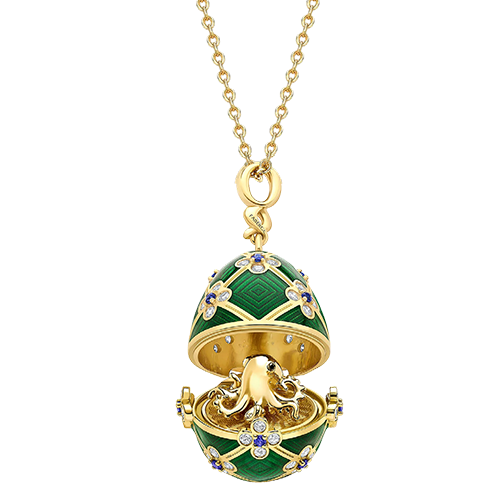 |
| Yellow Yellow gold combines pure gold with metals such as copper and silver. The ratio of these alloys determines the golden hue. Additionally, 22-carat yellow gold also includes traces of zinc. |
| White White gold is a mixture of pure gold with white metals such as nickel, palladium, and silver. White gold is trendy in contemporary jewellery design. |
|
| Rose Rose gold shares similar alloys with yellow gold; however, in different quantities. More copper than silver leaves rose gold with a beautiful colour. Rose gold was once known as ‘Russian gold’. | 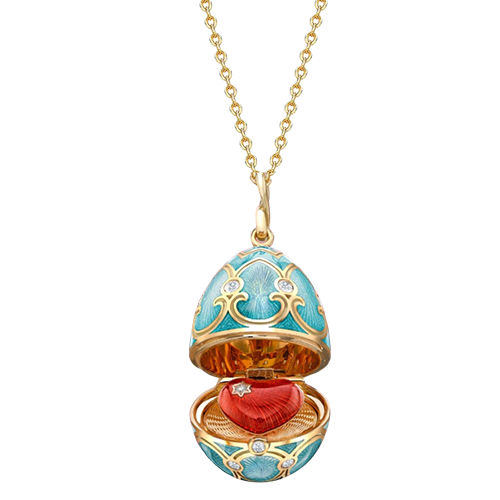 |
| Green Green gold is a composition of pure gold, copper, silver, and zinc. The alloys used determine the varying shades of green. |
| Purple Purple gold is created using a blend of pure gold and aluminium. It’s a rare and bold choice, and many often shy away from using it due to brittleness. |
|
| Blue Blue gold is a mixture of pure gold with gallium, indium, or iron. It’s one of the rarest varieties of coloured gold. | 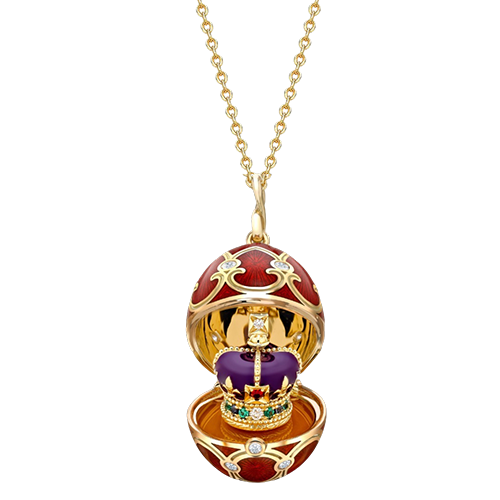 |
Grey
Grey gold is a fusion of pure gold with copper, iron, manganese, or silver, creating a versatile and sophisticated look. |
| Black Black gold embodies mystery. Achieved through a range of methods, including the addition of cobalt or by electroplating with black rhodium or ruthenium, black gold is a dramatic choice. |
READ EMAG